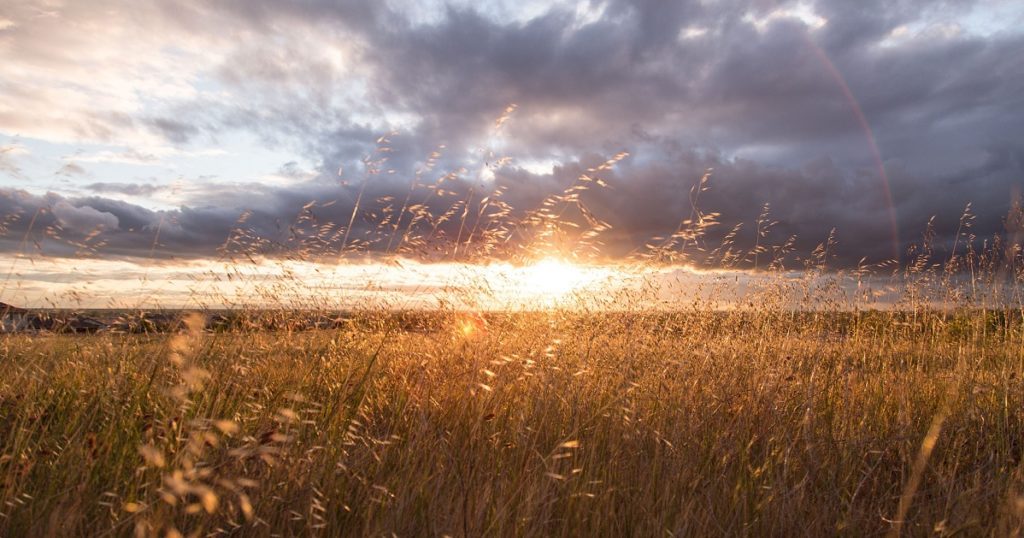Farming in the Space Age

In 2015, the UCC General Synod passed a resolution on Responsible Stewardship of the Outer Space Environment. Through a regular series of articles, the UCC maintains its commitment to addressing the serious threats posed by space debris.
In 1951, the publication of God, Whose Farm is All Creation in the United Kingdom changed the traditional focus of harvest festival hymns from the crops themselves to the activities required to grow them.
Author John Arlott wrote:
Take our ploughing, seeding, reaping,
hopes and fears of sun and rain,
all our thinking, planning, waiting,
ripening into fruit and grain.
The way farmers carry out this work has changed dramatically since the hymn was published.
Earth observing satellites and computers have taken their place alongside tractors and combines as critical tools for agricultural management.
Many farmers rely on remote sensing technologies for accurate and complete pictures of their crop fields. Images from space are used to create computer models containing critical information about soil structure, elevation, slope, fertility, and drainage.
In Crookston, Minnesota, for example, Gary Wagner, uses images from the International Space Station Agricultural Camera (ISSAC) to help grow sugar beets, spring wheat, sunflowers, and soybeans on his family farm. He calls ISSAC a “tool we can use as a reference to be able to make better decisions.”
Installed in 2011, ISSAC captures frequent images of the Earth in visible and infrared light. The images provide important information about biomass – more biomass means more crop yield potential.
ISSAC delivers its images to Wagner and other farmers in the region via the web within one or two days of their collection in space. A program designed by a local software developer enables them to manipulate the images into zones within their fields to reveal changes in vegetation. This permits them to make timely decisions about drainage and irrigation planning and fertilizer and pesticide application,
The proliferation of space debris, however, threatens the International Space Station and other spacecraft on which farmers rely. About a dozen times each year, the space station receives a collision warning from the U.S. Space Surveillance Network and has to maneuver out of the way of incoming debris. On several occasions, astronauts have been ordered by mission control to shelter in the Soyuz escape capsule docked outside the station in preparation for a quick getaway.
Astronaut Scott Kelly sweated it out in the Soyuz life boat during a close encounter with a fragment from a defunct Russian weather satellite. He warns “there is danger in becoming too complacent” about the reality of life in space.
Kelly’s concern is shared by numerous aerospace professionals, a growing number of whom say the international community should regulate spaceflight to prevent the creation of new debris that contributes to the congestion of key regions of space. It is unlikely that spacefaring nations will adopt worldwide rules anytime soon, though.
In the meantime, the running game of dodgeball between active spacecraft and debris grows ever more hazardous.
Paul Welsh, an executive for a private sector company that tracks debris, speaks for many when he asks: “Is it going to take some catastrophe to be a catalyst for action?”
Rev. Robert Bachelder is a retired UCC minister in Massachusetts and author of the General Synod resolution on responsible stewardship of the outer space environment.
Related News
Into the Fray
A few weeks ago, I sat in a Zoom room with about a dozen UCC pastors and lay leaders from...
Read MoreGod & Country
Beyoncé’s new Cowboy Carter album has sparked controversy over whether it should be...
Read MoreVoices for Change: Advocacy at the United Nations
“Why do you do this work?” The question came from the pastor of the youth group...
Read More
